You’ve just prepared your rental property and it’s ready for the market. Now you need to get it rented. How do you fill a vacancy fast?
A great rental listing.
But what makes great rental ads? Catchy headlines? Photos? Incentives?
I analyzed well over 2,000 rental ads in one metro market. My research busted some common myths about what makes a great rental property listing. Most things that I thought would correlate to a faster rental actually didn’t matter.
But I did discover the one thing that did matter.
Read on if you want to see the results of my research.
Specifically, I will show you:
- 5 surprising things that didn’t make a property rent faster
- The one thing that did correlate to fewer Days On Market
- How you can apply these findings to your next vacancy
But first, let me explain how I analyzed these rental ads.
Methodology & Background
Before we dive into the results it’s important to know how I conducted my research so you don’t draw any false conclusions.
First of all, I am not a statistician. I did not run a regression analysis but I did apply some rigor to the data to see if I could tease out what elements of a rental property listing were correlated with fewer vacancy days.
I was able to get a hold of rental ads that “sold” via the MLS in Hoboken, NJ in 2019. (Very big thanks to Soha Fontaine – one of the best realtors in the market and a good friend since I started rentals back in 2009!). There were 2,342 rentals in Hoboken that were sold via the local MLS last year.
CAUTION – This analysis was conducted in one market with specific attributes that may not translate to your market.
However, I believe the one factor that did drive fewer Days On Market is probably universal and you will profit if you understand how to use this knowledge to your advantage.
The Market
Hoboken is a small but thriving town just west of Manhattan on the Hudson River that offers easy access to New York City and a nightlife scene of its own.
It’s only a mile square but its population of over 55,000 residents tends to be younger professionals who work in the city and like to have fun on the weekends.
That means there is tons of demand for rentals and competition is tough.
- The median Days On Market was only 17.0 with many rentals being snapped up in under a week!
- The average square foot was only about 925 SF, so space is at a premium.
- Parking is also hard to come by, so rentals with access to parking can be difficult to find.
I was naturally curious if there was a formula for writing rental ads that resulted in fewer days on the market. There are a lot of theories of what makes a good rental ad so I thought I “knew” what worked.
I was wrong.
General Statistics
Here is a summary table of the data from the rental ads I reviewed broken out by length of time it took to rent the unit.
|
|
0-7 DOM |
8-14 DOM |
15-30 DOM |
31+ DOM |
Total |
|
Count |
591 |
475 |
567 |
709 |
2,342 |
|
Median DOM |
3.5 |
10.8 |
21.7 |
55.1 |
17.0 |
|
Median Rent |
$2,600 |
$2,600 |
$2,675 |
$2,750 |
$2,650 |
|
Median Rent / BR |
$1,800 |
$1,775 |
$1,800 |
$1,775 |
$1,800 |
Nothing really jumped out at me at this level. So I started testing if common wisdom was true in this market.
Rental Ad Myth 1 - More Photos Is Better

Every article you will read about what makes a good rental ad will tell you that the more photos you take the better. I believed that to be true as well.
Findings
At first, there appeared to be a small inverse correlation between the number of photos a rental listing had and how many days it sat on the market (i.e., more photos meant fewer Days On Market).

However, a closer look at the rentals that rented between 0 and 30 days shows only a slight trend towards fewer photos for longer rental vacancies.
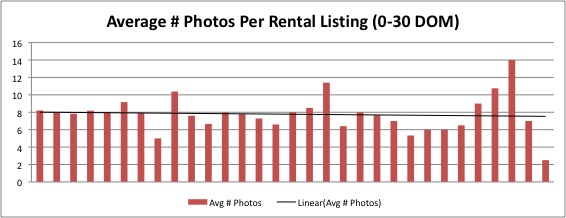
Ultimately, I didn’t see a strong correlation between the number of photos in a rental listing and the speed at which it was rented.
It didn’t matter if your rental took 3 days or 3 months to rent, it likely had around 8 photos.
Quality of Pictures
I also made some general observations about the quality of the photos in the rental ads.
Many rental listing photos did not seem very professional. They seemed to be taken with an agent’s smart phone, in dark lighting, and with a lot of clutter.
Here is a typical example:
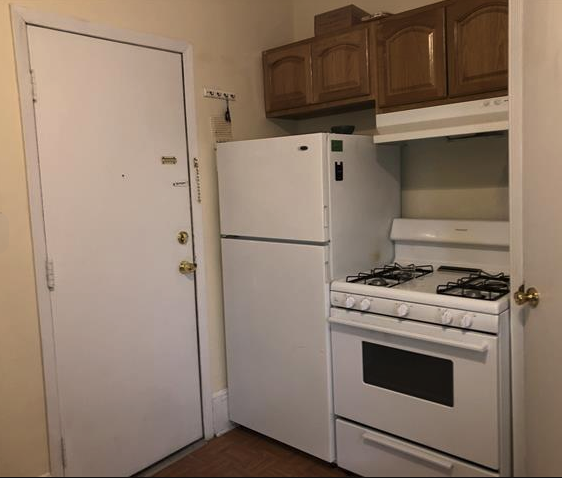
Note that I did not have access to all rental listing photos. I could only see the rental listing photos, for 262 of the rental listings. Nor did I objectively analyze every photo. I’m simply sharing my general observations about the overall quality of the photos.
Hypothesis
In a competitive market, you can get away with fewer photos, and of less quality. You also don’t need too many photos for a small 1 or 2 BR apartment. There are only so many angles of a tiny Living Room you can take.
Implication
That said, think of how much better your rental ad will stand out among the crowd if you went the extra step and included a few extra, high quality photos. Lead with your best photo because that’s the one most renters will see.
Rental Ad Myth 2 – Incentives Move Rentals

All else equal, the rental property that offers an incentive should rent faster than one without. And it shouldn’t matter if it’s a landlord’s or tenant’s market, right?
That’s not what I found in my analysis.
Findings
Instead, I found the OPPOSITE was true. The properties that rented slower were MORE likely to offer an incentive such as no fee or half fee.
(It’s common in Hoboken for the tenant to pay the agent’s fee.)

In fact, the rental properties that took 31 days or more to rent offered incentives at more than double the rate of the fastest moving rentals.
Perhaps this myth would be true if all else were really equal. But it’s usually not.
Hypothesis
Some landlord’s were overly optimistic about what price they could get for their rental and were reluctant to lower their price in the rental listing. They avoided this even after their property wasn’t moving after 1, 2, or even 3 weeks.
I’m guessing they were holding out for a higher rent and used incentives to rent their property faster.
It didn’t seem to work.
Implication
Price your rental right the first time. Don’t get emotional. Don’t guess. Use the local market comps to help you price your rental right. In a market like Hoboken where tenants pay for the broker’s fee you can use the agent’s expertise to find the right comps.
In other markets, you can use a pro tool like RentRange that includes data from actual rented units to tell you what rentals like yours are going for over the past 12 months.
PRO TIP – You can save a lot on a RentRange report if you buy directly from them instead of through a 3rd party. Sign up using my affiliate coupon code AR25OFF and save almost half off the normal retail price!
But you can’t stop there. You need to look at the other factors that drive total value. You need to make sure your rental is an overall value based on what renters are looking for in your local market.
That means you need to compare your rental versus the comps. Check out the listings and look at the pictures. How does your unit compare in terms of condition, amenities, etc.?
Real estate is very particular. The same layout in the same building can rent for more or less than another similar unit for a variety of reasons – the view, condition, proximity to noisy areas, etc.
It’s ultimately the VALUE that determines how fast an apartment will rent. Not the price or amount of incentives.
Rental Ad Myth 3 – Cheaper Rentals Have Fewer Vacancies

This should be clear cut right? Cheaper rentals will get snapped up faster than more expensive ones, especially in high demand markets like Hoboken. Right?
Findings
If all you studied was average rent price versus DOMs you might be temped to conclude this myth was actually true.
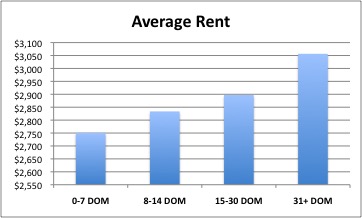
Not much changes when you look at the Median rent (which eliminates the influence of extreme highs and lows) either.

But look what happens when you adjust for the number of Bedrooms.
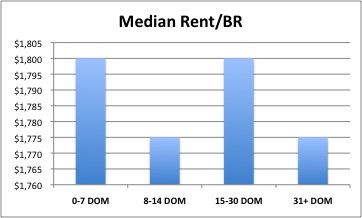
Hypothesis
So what’s really going on here?
In a metro like Hoboken, having roommates is the norm. It’s more realistic to look at the Rent per Bedroom because that’s more relevant to tenants.
Some of the fasted rented apartments were studio apartments. This drove the average Rent/BR up (I included studios with 1BRs).
Those that took longer to rent tended to have more 3BRs. This suggests that this type of property was in less demand. It’s harder and riskier to find good roommates for a 3 BR than a 2BR.
Implication
Know what type of rental is in high demand in your market. Having a luxury, 5BR home in a market where people desire studio apartments will not be good.
If you find your rental layout is less than the ideal, price it accordingly and factor in more vacancies. Ultimately, it may pay to trade it out for a more desirable rental.
Rental Ad Myth 4 – Allowing Pets Means A Faster Rental

Close to 70% of households have a pet but only an estimated 55% of landlords allow them according to Avail.
This clearly creates a need for rentals that allow pets. Surely those rental ads that allowed pets would be rented much quicker than those that didn’t.
Findings
Here are the percentage of rental listings that allowed for pets.
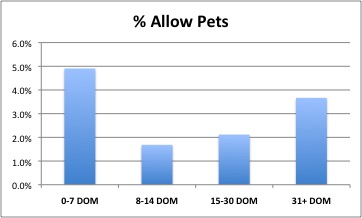
While there may be a slight affect for the rentals that went quickest, the overall percentage of rentals that allow for pets is too low to really be a major factor on vacancies. Less than 5% of all rentals allowed for pets in this data set.
Also, the rental listings that stayed on the market the longest allowed pets more often than many of those that went faster.
Hypothesis
Rentals that allow pets might not be in demand in young, urban areas as much as they might be in other areas. Perhaps these tenants don’t want to leave their dogs locked up for over 12 hours a day while they are at work in NYC?
Alternatively, landlords in hot markets like Hoboken simply may not need to allow pets to attract the best tenants.
Either way, there doesn’t seem to be a big benefit for landlords who open their rental listings up to pets.
Implication
You can avoid renting to tenants with pets if you are worried about the damage they may cause if you are in a hot market.
Alternatively, you can charge a premium if you are one of the few landlords that allows pets in your market.
However, you probably won’t rent your apartment much faster than the landlords who don’t allow pets.
Rental Ad Myth 5 – Words Can Make An Apartment Rent Faster

Writing a great rental listing requires good descriptions of what your prospective tenants can expect if they rent from you. I wanted to see if some words were associated with rentals that rented faster.
Findings
Here is a chart with the % of certain descriptive words mentioned.

I didn’t see a pattern of descriptions that gave an advantage to the apartments that rented the fastest. In fact, it seemed that the apartments that rented between 8-14 days seemed to be more Spacious, Beautiful, and Modern.
Then I checked for words focused on specific amenities. Here’s what I saw.
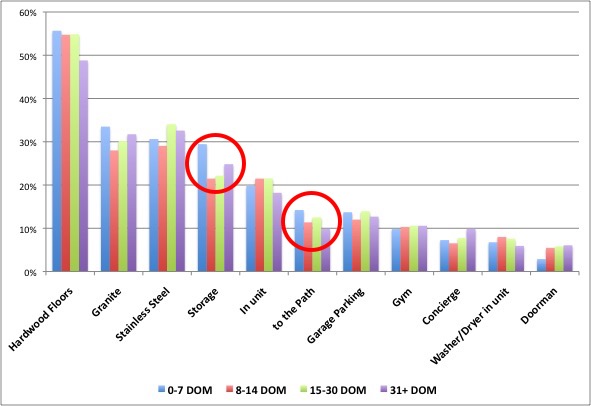
Again, there didn’t seem to be a pattern here. Apartments that rented the fastest were just as likely to offer common amenities such as hardwood floors, stainless steel appliances, and In-Unit Washer/Dryers.
The only two slight advantages I noticed was with mentions of “Storage” and “the Path” (the local subway into NYC).
Hypothesis
Most rental features were fairly universal in this market. Hardwood floors and granite countertops are the norm so merely mentioning them will not set you apart.
However, storage space and being within walking distance to the subway does set your rental apart from the herd in a metro market like Hoboken.
Implications
There is no magic word or descriptor that will make your rental rent any faster. Be descriptive and help your target tenants envision themselves living in your apartment but don’t go overboard on the prose.
Focus on the benefits the features provide. If you have sought-after amenities in scarce demand, you should absolutely highlight them in pictures and words.
This One Word Made All The Difference
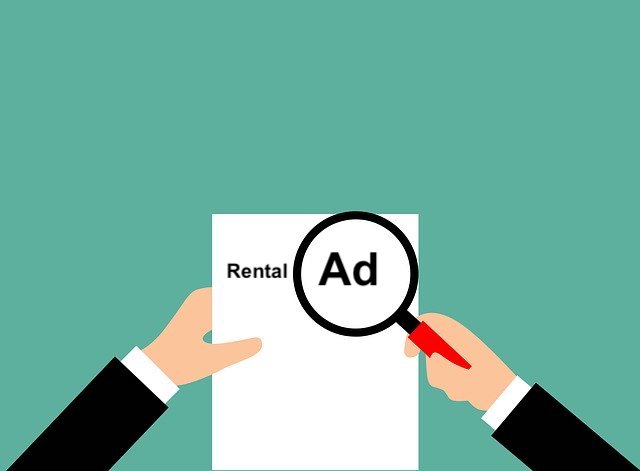
There was one word in these rental ads that did make all the difference actually. This one word seems highly correlated to how fast a rental listing went off market. The rentals with the fewest days on market mentioned this one word significantly more often than the other groups of rentals.
Findings
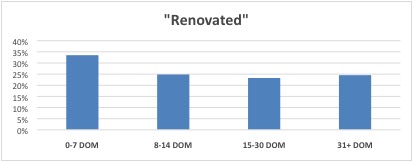
There seems to a clear bias for renovated apartments. It was correlated with apartments renting at least 1 week faster.
I thought this might be a fluke so I looked at other words.
Here is what happens when I sort on rental listings that mentioned “updated”
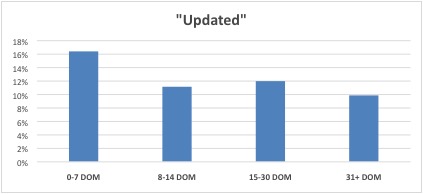
Same pattern.
Hypothesis
Hoboken is an old town with many buildings pre-dating the wartime era. They weren’t built with today’s modern amenities in mind. Renovated apartments seem to offer more of what locals are looking for. There is a subset of renters who will go out of their way to snatch up a renovated apartment before it goes to someone else.
Implication
Whether you are in an urban market like Hoboken or in the suburbs of a metropolitan area, it probably pays to renovate. Review the local comps and see if your rental could use some updates.
Use my Punch List Priority Matrix to help you focus on the updates that matter most to your tenants and will have the biggest payoff.
Conclusion
There are a lot of myths out there about what makes a a great rental property listing. I wanted to put those theories to the test.
A couple of things surprised me the most about these rental ads.
First, I expected more emphasis on convenience. but that didn’t seem to be the case.
Second, I also expected price and incentives to be a clear driver of how quickly an apartment was taken off the market. I didn’t see that either.
In the end, there were a few implications that you may find useful when it comes time to write your next rental ad:
- Take good photos and include enough to showcase what your tenant will get if they rent from you. But don’t go overboard, you don’t need multiple angles of every room.
- Avoid incentives. Set the rent right the first time with the help of pro tools if necessary. Rental ads with incentives practically scream “desperate landlord.”
- Know what type of rental is in high demand in your market and price it accordingly. You don’t have to have the cheapest rental to rent fast.
- Opening up your rental to pets may not be necessary in a hot market or if your target tenant doesn’t have any pets.
- Write a good description that helps your tenant envision themselves in your rental. But don’t agonize trying to find the best words. Find the ones that inform prospective tenants and help set your rental apart from others.
- It might pay to renovate your apartment. Check your local comps and prioritize upgrades using a punch list priority matrix.
I had a lot of fun digging into the data. I hope you found this analysis of over 2,000 rentals helpful.
Next Steps
Now that you know how to write a rental ad that gets attention, what’s next?
Finding the best rental listing site to market your rental. See which ones send the highest quality leads and which ones don’t!






You are missing something huge: finding the right tenant takes TIME. We allow ourselves 60 days of marketing time to fill a place, because after fielding hundreds of inquiries, about 1 out of 100 even begin to qualify financially and in other ways. So we do not let our places go empty to begin with, we market them while still occupied, although our photos are of the empty space. So, at least in our case and for many other landlords I know, your whole premise is wrong.
Oh and one reason a title with the words “renovated” rents faster is because that unit is likely newly ready, already empty and ready to occupy.
Thanks Wendy. I think you have a great point with the “renovated” units. They could have had an advantage because they may have been vacant, easier to show, etc.
I’m not sure I completely understand your point about the time it takes to find a good tenant. How would that have impacted the average DOMs? Are you suggesting the landlords of the units that rented faster were less picky? Presumably most landlords were looking for good tenants across all the DOMs in this data set. There are no shortage of good tenants in this market in my experience. Can you clarify?